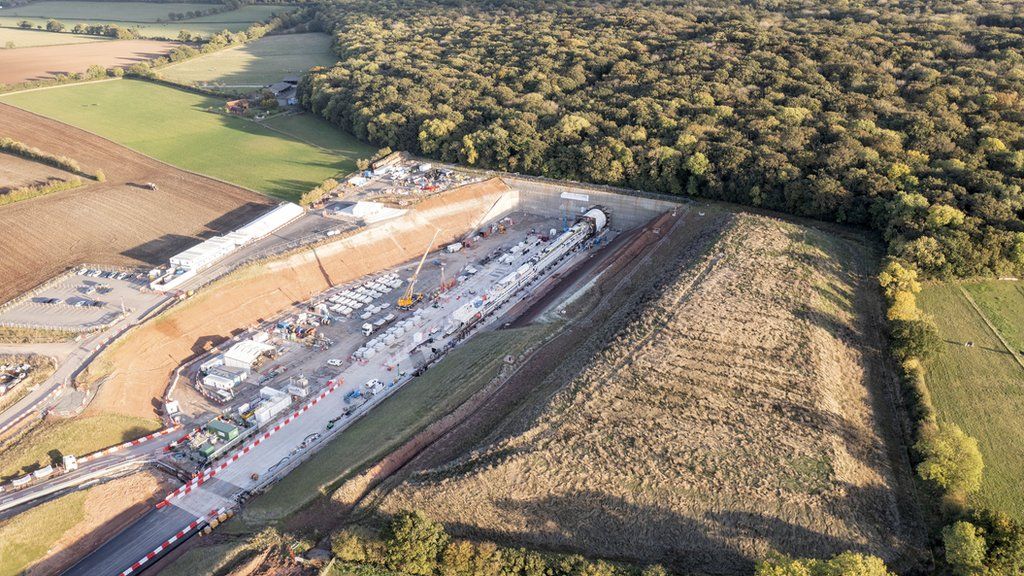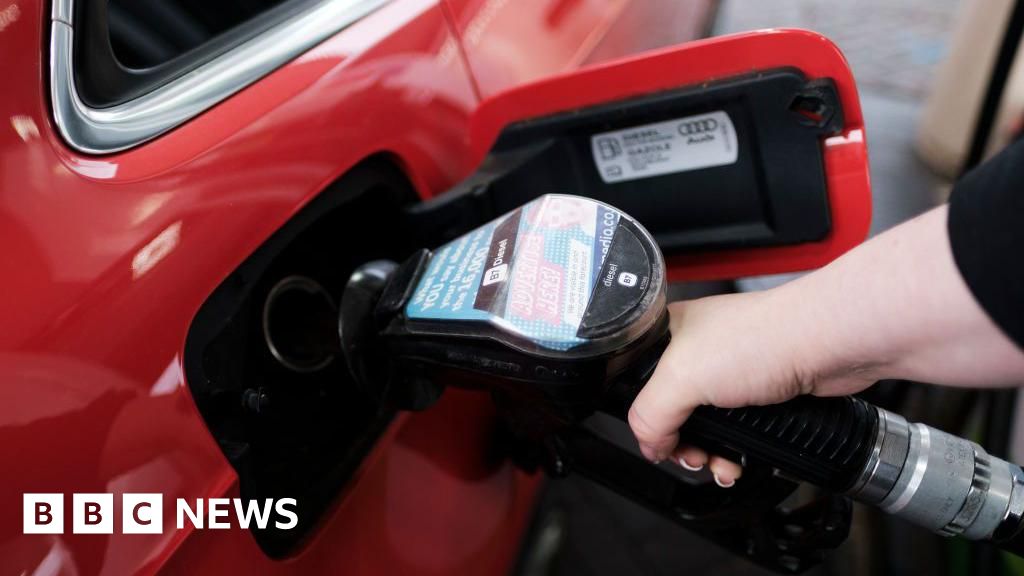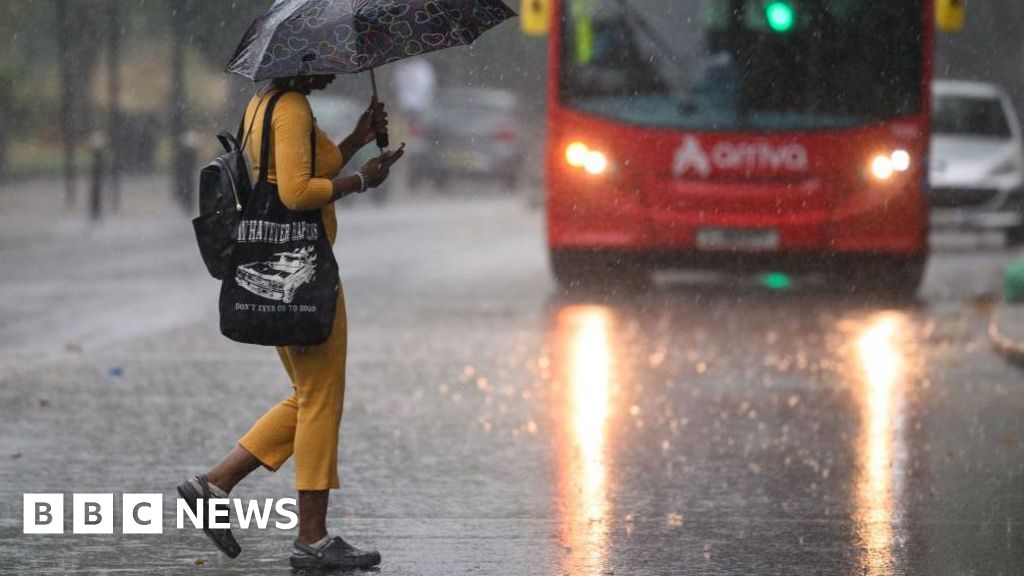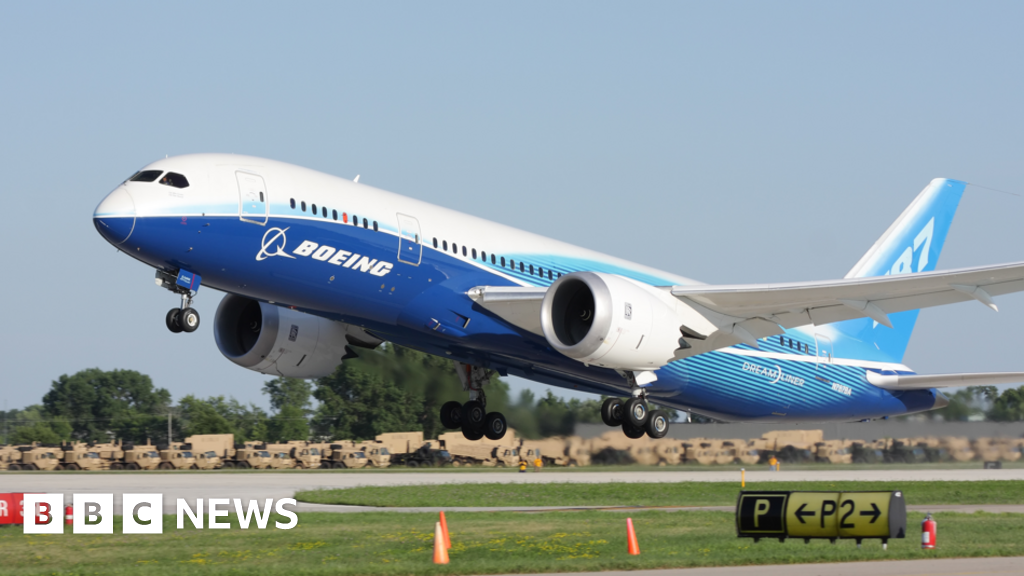ARTICLE AD BOX
 Image source, Getty Images
Image source, Getty Images
By the Visual Journalism Team
BBC News
The northern legs of the HS2 rail link have been scrapped - but building work across a huge swathe of southern England and the Midlands has been going on for more than three years.
Drills are churning under the landscape between London and Birmingham around the clock, and there are 350 active construction sites along the 140 mile (225km) route, but no trains are expected to run on it until at least 2029.
So how much of HS2 - which remains one of the most expensive rail projects in the world - has already been built?
Eleven tunnels, a viaduct that will be the UK's longest railway bridge and four new stations have all been planned - with the track itself being laid later.
How much tunnel has been built?
The vast system of tunnels that is being created to allow HS2 trains to pass through much of the countryside below ground is one of the most time-consuming and expensive parts of the project.
Some 32.5 miles (52.5 km) of the route will be through tunnels, of which about 14 miles (22.5km) have been completed.
Work to create the Chiltern tunnel, which - at 10 miles (16km)- will be the project's longest tunnel, is well under way, with about 75% of it having been excavated by two huge boring machines.
The southern entrance to the tunnel - shown below - is next to the M25 motorway near the village of West Hyde in Hertfordshire.
Image source, Getty Images
The tunnel entrance is part of HS2's largest construction site, where engineers are also building the longest railway bridge.
Your device may not support this visualisation
- The Northolt tunnel will be 8.4 miles (13.6km) long
- The Euston tunnel will be 4.5 miles (7.3km) long although it has been put on hold due to rising costs
- The Long Itchington Wood tunnel will be one mile (1.6km) long, taking the HS2 route under that woodland and the neighbouring Ufton Wood, both of which date back to about 1600
- Bromford tunnel will be 3.5 (5.8km) miles long
How do the tunnelling machines work?
The tunnels are being cut by a fleet of giant tunnel-boring machines, up to 560ft (170m) long.
Image source, Getty Images
The machines cut through the earth and rock with rotating cutterheads, with the soil funnelled away behind.
As the machine advances, it also lays the concrete segments of the new tunnel, connecting them together to form the ring of the tunnel.
The tunnels are about 30ft (9m) wide and up to 300ft below the surface in some places.
The machines, which all have female names like Caroline and Sushila, are running 24 hours a day and can cut through about 50ft (15m) a day.
Image source, Getty Images
What are the green tunnels?
Some of the tunnels will be created using a cut-and-cover method - without the need for boring machines.
Land is excavated, the tunnel sections put in place and then the whole area is covered with soil, and planted with shrubs and trees.
There will be six "green tunnels" along the London to Birmingham route:
- Copthall: 0.55 miles (0.9km)
- Wendover: 0.9 miles (1.2km)
- Greatworth: 1.6 miles (2.7km)
- Chipping Warden: 1.5 miles (2.5km)
- Long Itchington Wood Green Tunnel: 0.1 miles (0.16km)
- Burton Green: 0.5 miles (0.7km)
Where will the huge railway bridge be?
As well as underground and traditional tracks, the line will also be carried overhead by the Colne Valley Viaduct.
Construction started in 2021 on what will be the UK's longest railway bridge - two miles (3.2km) long spanning the lakes and waterways between Hillingdon and the M25.
A giant bridge-building machine is constructing the curving viaduct from about a thousand concrete segments made at a dedicated factory nearby.
Image source, Getty Images
What has been done at the new stations?
Perhaps the work that has affected most people so far has been on the new stations that are needed to accommodate HS2 trains, particularly at Curzon Street Station in the centre of Birmingham.
Image source, Getty Images
Plans to develop the Grade I listed Victorian station were signed off in 2017, and since then contractors have completed site clearance works.
Your device may not support this visualisation
The new station design includes rainwater capture and 2,800sq m (30,000sq ft) of solar panels on canopies covering the platforms - seven of which will be for high-speed trains.
The intended London terminus for HS2 was at Euston Station but preparatory works on the site were halted in March, and its future is now unclear.
Extending HS2 to Euston involves digging a 4.5-mile (7.2km) tunnel from Old Oak Common, in the capital's western suburbs, and building a new station at Euston next to the existing West Coast Main Line terminus, but costs had ballooned to £4.8bn, compared with an initial budget of £2.6bn.
Your device may not support this visualisation
The Euston project is being put under separate management and will now have six platforms for high-speed trains, instead of the 11 originally planned.
However, the BBC has been told it will be dependent on private investment, and if private funding is not forthcoming, HS2 will only run to Old Oak Common.
Old Oak Common Station will be the UK's largest newly built railway station, but there are concerns over the lack of options for onward journeys, with government modelling suggesting two-thirds of people would prefer to travel to or from Euston.
The station will have 14 platforms - including six underground high-speed platforms. Workers have dug about half the 50ft (15m) depth needed for the underground platforms since the project was approved in June 2021.
Interchange Station near Solihull will serve Solihull, Birmingham Airport and the NEC.
Work so far has involved building new bridges as part of a remodelled road network for access to the new station, and the site for the station itself is being prepared.
What is the status of the new trains?
As for the trains themselves, it is unclear what this week's decision means for the £2bn worth of contracts agreed in 2021.
The initial deal was for 54 bullet-style trains, which would be capable of reaching speeds of 225mph (360km/h) on the new HS2 track, with the first expected to be completed in 2027 and to carry its first passengers between 2029 and 2033.
The new fully electric trains are being built in Derby and County Durham, and will be able run on the UK's existing rail network at lower speeds so could continue beyond Birmingham, but whether 54 will still be needed is not yet known.
Another potential issue is that the 650ft (200m) long trains are designed so that two can be joined together to double the length and 550-seat capacity - but currently the longest platform at Manchester Piccadilly is too short to accommodate that.
Will the scaled back project be worth it?
The original estimate for HS2 was that it would cost about £33bn, but by 2019 - the last official estimate - it had ballooned to £71bn, including £26bn for the now scrapped section between Birmingham and Manchester.
The prime minister said scaling it back would now save about £36bn, which he has promised to spend on transport infrastructure around the country.
The move has raised questions about the impact on the economic benefits of the project that were expected to result from improving capacity on the UK's rail network and faster journey times.
The top civil servant at the Department for Transport has concluded that completing the section between London and Birmingham is still value for money - but she could only reach that conclusion by excluding the money already spent on Phase 1 of the project.
- Written by Mike Hills, Dominic Bailey and Chris Clayton. Graphics by Kate Gaynor, Gerry Fletcher and Sarah Deshaut

 1 year ago
34
1 year ago
34








 English (US) ·
English (US) ·